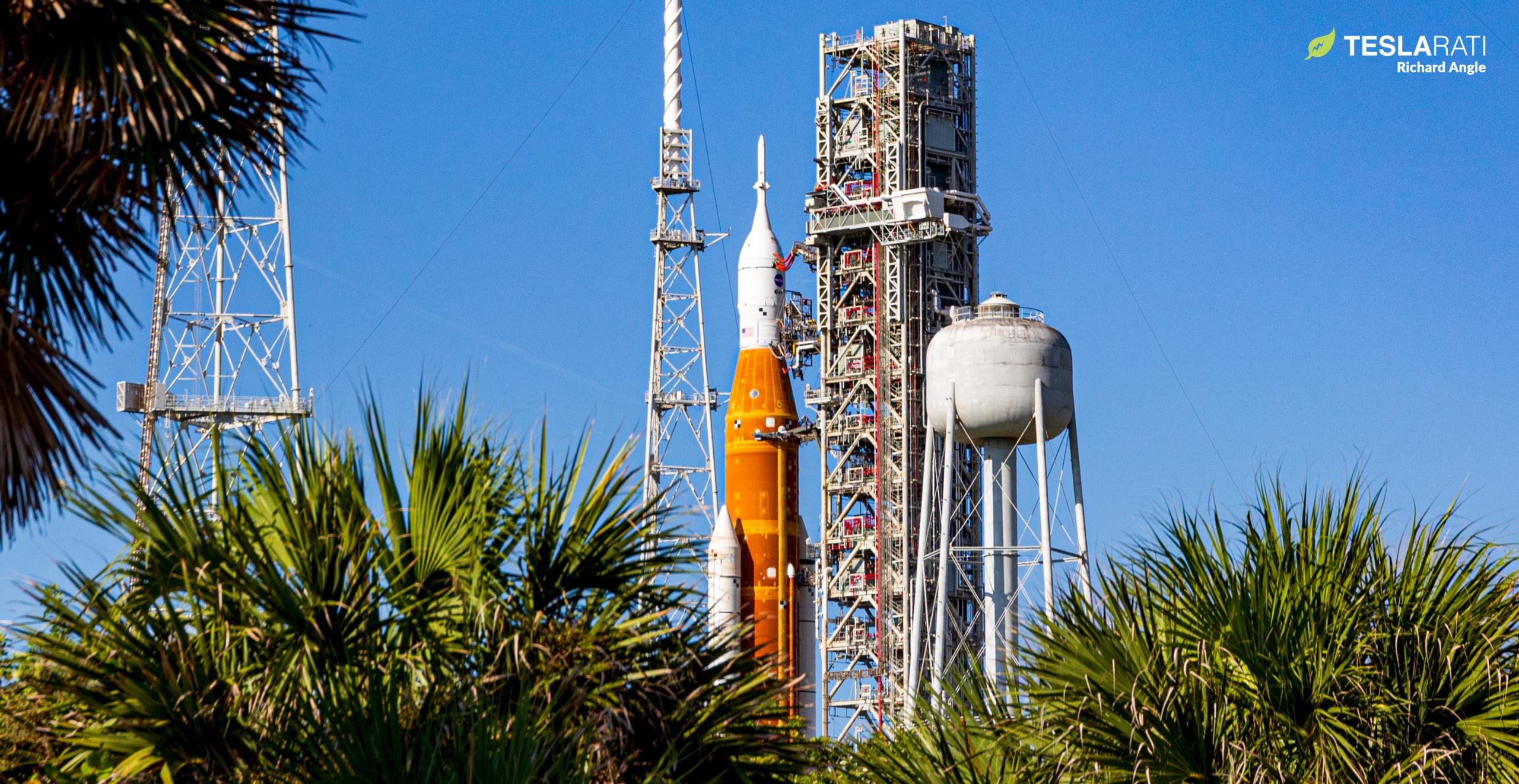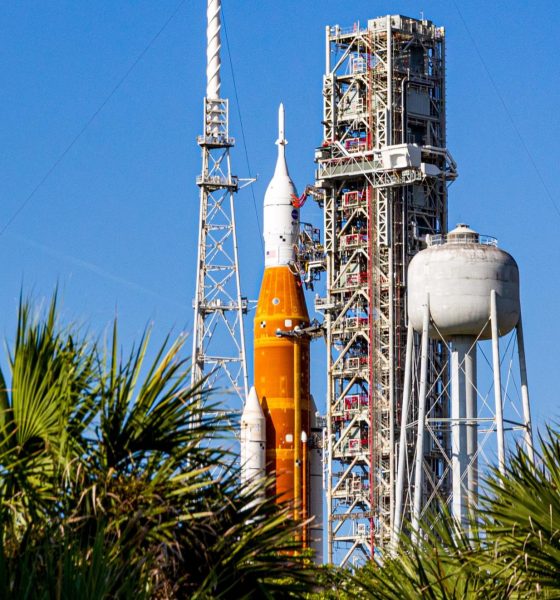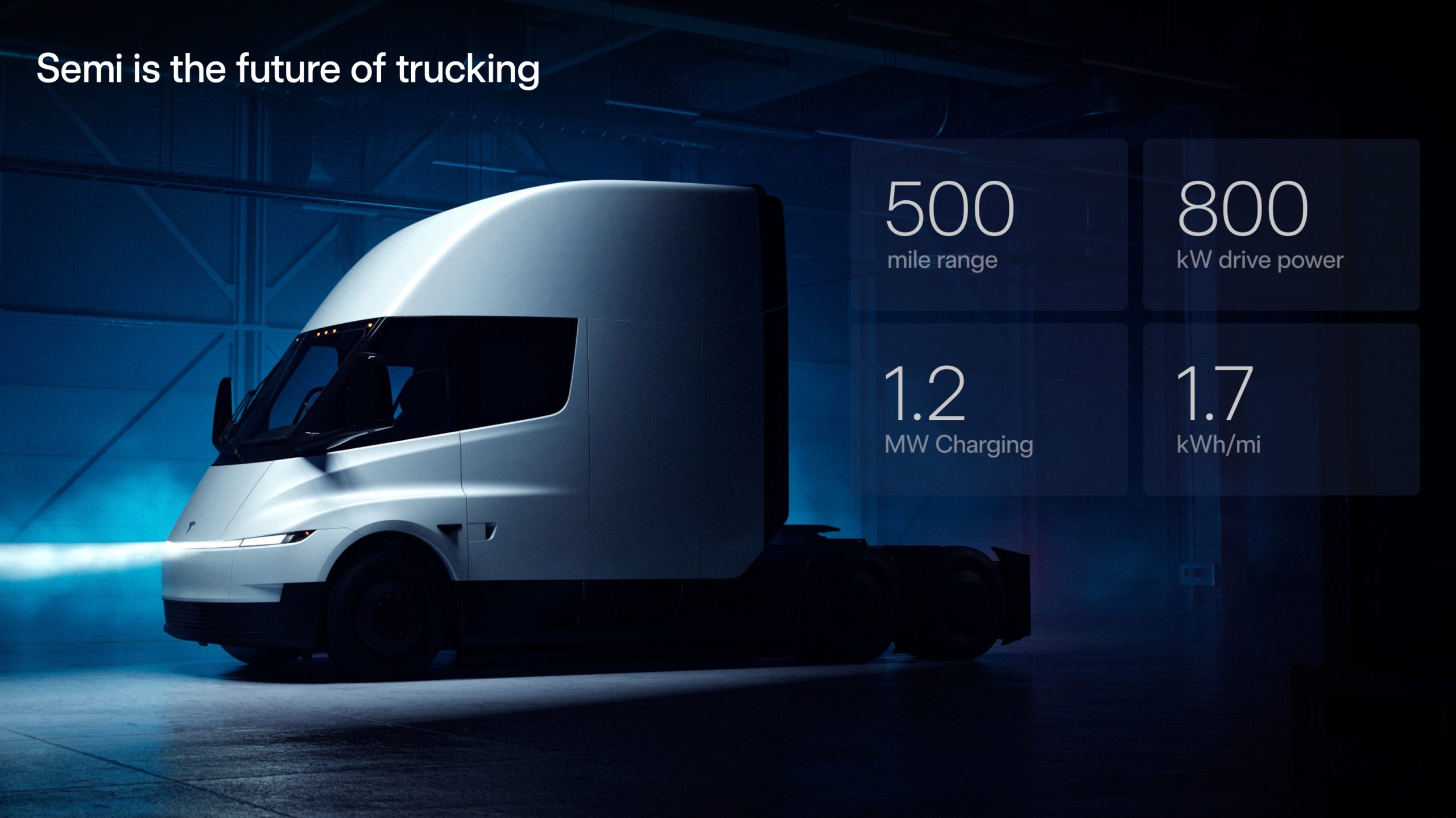

News
NASA’s SLS Moon rocket almost aces vital prelaunch test on 7th try
Following several incomplete attempts in April, June, August, and September, NASA’s first Space Launch System (SLS) Moon rocket has almost aced a vital prelaunch test on the seventh try.
NASA says that “all objectives were met” during the ten-hour test, which wrapped up around 4:30 pm EDT (20:30 UTC) on Wednesday, September 21st. Despite the rocket running into multiple additional issues, some old and others new, the agency was confident enough in the preliminary results of the wet dress rehearsal (WDR) – deemed a “cryogenic demonstration test” – to reaffirm that it’s still working towards a third launch attempt as early as September 27th.
That launch date is not set in stone, but NASA also hasn’t ruled out the window after the latest round of SLS testing. The agency will host a press conference on Friday, September 23rd, to provide its final decision and offer more details about the seventh wet dress rehearsal.
Despite NASA’s apparent confidence after the test, which was admittedly smoother than most previous SLS tests at the launch pad, it was far from smooth. The immediate story of the “cryogenic demonstration test” dates back to the SLS Artemis I rocket’s second so-called “launch attempt” on September 3rd. During that attempt, the launch was aborted well before SLS was ready when NASA detected a major hydrogen fuel leak around one of the quick-disconnect umbilical panels that fuels and drains the rocket. Remote troubleshooting was unable to solve the problem, forcing NASA to stand down.
Over the last few weeks, teams inspected, tested, and repaired the faulty Tail Service Mast Umbilical (TSMU), preparing for a cryogenic proof test meant to verify that the issue was fixed. During that September 21st test, the TSMU still leaked significantly for the whole duration, but it did so more predictably and – unlike prior leaks – never violated the limits that would trigger a launch abort.
But near the end, a different umbilical panel developed a significant hydrogen leak that did violate those launch constraints, meaning that NASA would have likely had to stand down yet again if it had attempted to launch before completing additional testing. The test was completed successfully, but its goals and constraints were not the same as those facing a launch.
A NASA-developed rocket leaking hydrogen is unfortunately a tale as old as time. That the agency that struggled with hydrogen leaks throughout the 30-year career of the Space Shuttle appears to be just as flabbergasted by nearly identical problems on a new rocket – SLS – that has Shuttle ‘heritage’ on almost every square inch is not surprising, even if it is somewhat embarassing.
Liquid hydrogen fuel always has been and likely always will be a massive pain to manage in any rocket, but especially in a large rocket. As the smallest element in the universe, it is fundamentally leak-prone. Combined with the fact that it only remains liquid below the extraordinarily low temperature of -253°C (-423°F), generates ultra-flammable hydrogen gas as it continually attempts to warm to a more stable temperature, and naturally embrittles most metals, it’s an engineering nightmare by almost every measure.
For all that pain, hydrogen does provide rocket engineers exceptional efficiency when properly exploited, but even that positive aspect is often diminished by hydrogen’s ultra-low density. For rocket stages that have already reached orbit, hydrogen-oxygen propellant offers unbeatable efficiency. But for a rocket stage that will never be used in orbit, like the SLS core stage, hydrogen fuel is rarely worth the tradeoffs – a reality that SLS is unfortunately providing a strong reminder of.
Demonstrating the Groundhog Day-esque nature of NASA rockets and hydrogen leaks, the same leaky TSMU panel that aborted SLS’ September 3rd launch attempt (sixth WDR) and had to be fixed and retested on September 21st also caused a hydrogen leak that partially aborted the rocket’s third wet dress rehearsal attempt in April 2022. NASA then rolled the rocket back to the Vehicle Assembly Building (VAB), where workers spent almost two months inspecting and reworking the fuel TSMU and fixing other issues. During its first test (WDR #4) after rolling back to the pad in June, the same fuel TSMU leaked and NASA had to return the rocket to the VAB again to fix the problem.
The fuel TSMU then leaked on the SLS rocket’s first launch attempt (really WDR #5), but the problem was resolved and was not what caused NASA to stand down. It was, however, a primary reason behind NASA’s second aborted launch attempt (WDR #6). With any luck, the eighth time will be the charm.

News
Tesla Cybercab tests are going on overdrive with production-ready units
Tesla is ramping its real-world tests of the Cybercab, with multiple sightings of the vehicle being reported across social media this week.

Tesla is ramping its real-world tests of the Cybercab, with multiple sightings of the autonomous two-seater being reported across social media this week. Based on videos of the vehicle that have been shared online, it appears that Cybercab tests are underway across multiple states.
Recent Cybercab sightings
Reports of Cybercab tests have ramped this week, with a vehicle that looked like a production-ready prototype being spotted at Apple’s Visitor Center in California. The vehicle in this sighting was interesting as it was equipped with a steering wheel. The vehicle also featured some changes to the design of its brake lights.
The Cybercab was also filmed testing at the Fremont factory’s test track, which also seemed to involve a vehicle that looked production-ready. This also seemed to be the case for a Cybercab that was spotted in Austin, Texas, which happened to be undergoing real-world tests. Overall, these sightings suggest that Cybercab testing is fully underway, and the vehicle is really moving towards production.
Production design all but finalized?
Recently, a near-production-ready Cybercab was showcased at Tesla’s Santana Row showroom in San Jose. The vehicle was equipped with frameless windows, dual windshield wipers, powered butterfly door struts, an extended front splitter, an updated lightbar, new wheel covers, and a license plate bracket. Interior updates include redesigned dash/door panels, refined seats with center cupholders, updated carpet, and what appeared to be improved legroom.
There seems to be a pretty good chance that the Cybercab’s design has been all but finalized, at least considering Elon Musk’s comments at the 2025 Annual Shareholder Meeting. During the event, Musk confirmed that the vehicle will enter production around April 2026, and its production targets will be quite ambitious.
News
Tesla gets a win in Sweden as union withdraws potentially “illegal” blockade
As per recent reports, the Vision union’s planned anti-Tesla action might have been illegal.

Swedish union Vision has withdrawn its sympathy blockade against Tesla’s planned service center and showroom in Kalmar. As per recent reports, the Vision union’s planned anti-Tesla action might have been illegal.
Vision’s decision to pull the blockade
Vision announced the blockade in early December, stating that it was targeting the administrative handling of Tesla’s facility permits in Kalmar municipality. The sympathy measure was expected to start Monday, but was formally withdrawn via documents sent to the Mediation Institute and Kalmar Municipality last week.
As noted in a Daggers Arbete report, plans for the strike were ultimately pulled after employer group SKR highlighted potential illegality under the Public Employment Act. Vision stressed its continued backing for the Swedish labor model, though Deputy negotiation manager Oskar Pettersson explained that the Vision union and IF Metall made the decision to cancel the planned strike together.
“We will not continue to challenge the regulations,” Petterson said. “The objection was of a technical nature. We made the assessment together with IF Metall that we were not in a position to challenge the legal assessment of whether we could take this particular action against Tesla. Therefore, we chose to revoke the notice itself.”
The SKR’s warning
Petterson also stated that SKR’s technical objection to the Vision union’s planned anti-Tesla strike framed the protest as an unauthorized act. “It was a legal assessment of the situation. Both for us and for IF Metall, it is important to be clear that we stand for the Swedish model. But we should not continue to challenge the regulations and risk getting judgments that lead nowhere in the application of the regulations,” he said.
Vision ultimately canceled its planned blockade against Tesla on December 9. With Vision’s withdrawal, few obstacles remain for Tesla’s long-planned Kalmar site. A foreign electrical firm completed work this fall, and Tesla’s Careers page currently lists a full-time service manager position based there, signaling an imminent opening.
News
Tesla Semi program Director teases major improvements

Tesla Semi Program Director Dan Priestly teased the major improvements to the all-electric Class 8 truck on Thursday night, following the company’s decision to overhaul the design earlier this year.
Priestley said he drove the Semi on Thursday, and the improvements appear to be welcomed by one of the minds behind the project. “Our customers are going to love it,” he concluded.
Just drove the redesigned Semi. Our customers are going to love it. https://t.co/KZ88sf1CDL
— Dan Priestley (@danWpriestley) December 19, 2025
The small detail does not seem like much, but it is coming from someone who has been involved in the development of the truck from A to Z. Priestley has been involved in the Semi program since November 2015 and has slowly worked his way through the ranks, and currently stands as the Director of the program.
Tesla Semi undergoes major redesign as dedicated factory preps for deliveries
Tesla made some major changes to the Semi design as it announced at the 2025 Annual Shareholder Meeting that it changed the look and design to welcome improvements in efficiency.
Initially, Tesla adopted the blade-like light bar for the Semi, similar to the one that is present on the Model Y Premium and the Cybertruck.
Additionally, there are some slight aesthetic changes to help with efficiency, including a redesigned bumper with improved aero channels, a smaller wraparound windshield, and a smoother roofline for better aero performance.
All of these changes came as the company’s Semi Factory, which is located on Gigafactory Nevada’s property, was finishing up construction in preparation for initial production phases, as Tesla is planning to ramp up manufacturing next year. CEO Elon Musk has said the Semi has attracted “ridiculous demand.”
The Semi has already gathered many large companies that have signed up to buy units, including Frito-Lay and PepsiCo., which have been helping Tesla test the vehicle in a pilot program to test range, efficiency, and other important metrics that will be a major selling point.
Tesla will be the Semi’s first user, though, and the truck will help solve some of the company’s logistics needs in the coming years.








